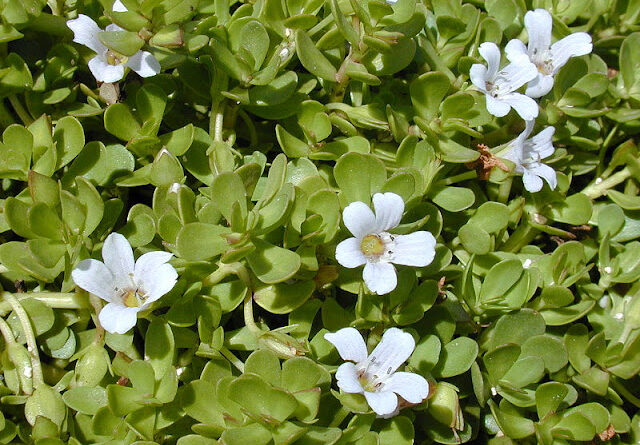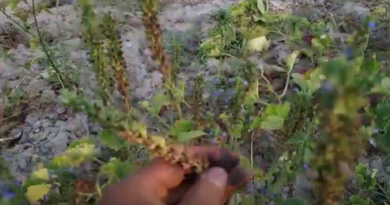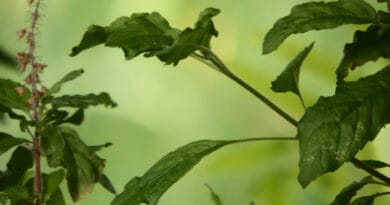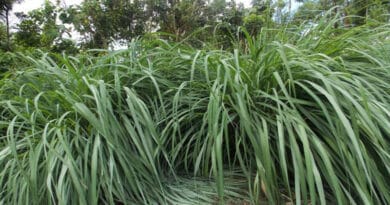Cultivation of Medicinal Plant ‘Brahmi ‘ (Bacopa monnieri ) in India
Cultivation of Medicinal Plant ‘Brahmi: A highly valuable medicinal creeping succulent herb
Brahmi [Bacopa monnieri (Linn.) ] belongs to the family Scrophulariaceae. It is commonly known as Brahmi, and it is a highly valuable medicinal creeping succulent herb found in humid and warmer regions of the world.
In India, it is found naturally growing in the states of Uttar Pradesh, Punjab, Haryana, Bihar, Bengal, Tamil Nadu, Kerala, Karnataka, the foothills of Himachal Pradesh, and Uttaranchal.
According to the National Medicinal Plants Board, New Delhi, it is classified as one among 32 medicinal plants identified for cultivation and conservation and denoted among the list of 178 medicinal plant species in high-volume trade, i.e., 2000-5000 MT (metric tons) annually.
The Major Content Found in Brahmi:
The plant contains saponins, bacosides A and B, monnierin, hersaponin, betulic acid, c-mannitol, and stigmasterol. B-sitosterol and stigmastanol.
Health Benefits of Brahmi:
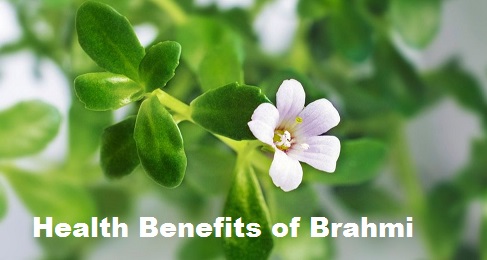
1) Brahmi is astringent, bitter, cooling, pungent, emetic, laxative and improves intellect
2) Useful in bed ulcers, tumors, and enlargement of the spleen.
3) The entire plant is used in the indigenous system of medicine as a nerve tonic and a cure for epilepsy and insanity.
4) It is also being used as a diuretic and for treating dermatosis, anemia, dropsy, arthritis, anorexia, dyspepsia, emaciation, and rheumatism. asthma, and hoarseness.
5) Besides this, the Brahmi also has good potency in controlling cough, fever, diabetes, and snakebite.
6) Because of its inherent potential to enhance memory and vitality, this miracle plant is gaining attention for its commercial cultivation globally.
7) This plant is considered one of the “Celestial drugs” (Divya Ausadhi) when consumed with milk for six months.
In the Siddha system of medicine, the plant is useful against painful joints, swelling in joints, peripheral neuritis, constipation, and burning urination.
8) It is also used in convulsions, mental retardation, chest congestion, and laryngitis.
Some commercial products of Brahmi:
The whole plant is used in a variety of preparations like Brahmighrtam, Sarasvataristam, Brahmitailam, and Misrakasneham etc.
Modern proprietary herbal formulations containing Brahmi as the major ingredient, like Memory Plus, Misrakasneham, Megamind Plus, Mental Brahmi, and various hair oils, are widely available in the market.
Vernacular Names of Brahmi:
English: Hyssop, Water hyssop, Herb of grace
Sanskrit; Nera Brahmi, Saraswathi
Hindi, Brahmi, jalnim
Kannada; Niru Brahmi
Soil and Climate Required for Brahmi Cultivation;
1) The plant grows well in poorly drained soils under sub-tropical climates.
2) A temperature range between 33-40 °C with a relative humidity of 65–80% has been found good for its optimum vegetative growth.
Field Preparation for Brahmi Cultivation
1) The land is prepared well by repeated ploughing and harrowing.
Propagation of Brahmi Crop;
Manure and Fertilizer Requirements in Brahmi Crop;
Integrated application of organic manure and inorganic fertilizers [RDF (100:60; 60 kg NPK/ha)+ FYM (10 t/ha)] results in the highest dry herbage yield (approximately 16 t/ha).
Irrigation Requirement in Brahmi Crop;
Weeding Requirement in Brahmi Crop
Primarily, hand weeding (3-4) is needed at every 15 to 20-day interval, but later on, as plants proliferate and form a dense mat of vegetation, weeding may be done as and when required.
Intercropping System in Brahmi Crop
Brahmi may fit well in the Kharif season rice-based cropping system in the plains of North India with the following cropping sequence:
Pest and Disease Management in Brahmi
Insects like a grasshopper and tobacco cutworm defoliate the plants during the summer season. These insects cause mass defoliation, which reduces the dry herbage yield. These pests can be controlled by spraying neem- or pongamia-based biopesticides and botanicals. No serious diseases have been reported on this crop.
Harvesting of the Brahmi Crop;
1) First harvesting commences four months after planting.
2) Subsequent harvests can be done at 2-3 month intervals, depending upon the season and growth.
The Yield of Brahmi Crop ;
Post-harvest handling and storage of Brahmi Crop;
1) The traditional method is to dry the harvested fresh material by spreading it on the ground under shade at room temperature.
Economics of Brahmi cultivation;
1) As per the latest price statistics (National Medicinal Plants Board, 2019), the price for the whole dry plant of Brahmi ranges from Rs 20-50/kg in different markets across India.
2) The cost of cultivation is around Rs 80,000/- per hectare with a mean yield of 10 tons of dry herb per hectare.
3) The gross return of 3.50,000/- per hectare can be obtained with a selling price of Rs 35/kg of dry herb.
4) Hence, a net return of 2,70,000/- can be obtained by cultivating Brahmi in a one-hectare area.
